How indigenous practices can help protect forests
As wildfires intensify and pose a growing risk in the American West, tribal leaders and community members are bringing fire back to their forests to save them.For thousands of years, Indigenous people stewarded their forests with fire. This cultural burning is part traditional food and craft production, part environmental protection and part ceremony with the land. Western settlement transformed the region with mining and logging, uprooting Native peoples and putting out cultural fire practices.In the 19th century, California lawmakers suppressed the burns. An 1850 law made it legal to fine or punish anyone burning land. The 1911 Weeks Act instituted a policy of total fire suppression, dictating that state and federal agencies should control wildland fires to prevent their spread. This made cultural fire illegal at a federal level. Native people were shot and imprisoned for starting fires.Bill Tripp at the Tishaniik Farm burn in June.A tree ring chronology of the forest burn scars from 1600s to 2015. The text points out where in 1850, California banned cultural fire. Again in 1911, as part of the Weeks Act, the U.S. passed measures to suppress fires nationwide.Now, after a new generation of tribal and community members organizing, educating and lobbying about the benefits of bringing fire back to the land, this time-honored practice is returning. Last fall, California enacted legislation allowing federally recognized Native American tribes to conduct cultural burning, acknowledging their sovereignty and history with the land.The legislative victory allows tribes to set fires with less federal oversight and recognizes cultural burning as a way to make the state resilient to wildfires. Two Washington Post reporters traveled to Northern California to witness the practices firsthand.We watched them paint with fire. Water hoses in hand, two men corralled a three-foot-high fire as it moved through an open field, hosing down grass to keep the flames under control. It’s a scene that normally spells wildfire disaster. And yet the fire moved alongside the group.They’re cultural fire practitioners: trained and recognized by tribes to guide and manage blazes. This particular group was led by Bill Tripp, the director of natural resources and environmental policy for the Karuk Tribe. It was the end of June when we caught up with them as they burned farmland in Orleans, California, about 50 miles south of the Oregon border.Like most burns for tribes native to this stretch of the Klamath River, their activity encourages native species growth, reduces wildfire risk and protects raw materials for craft. They conducted it on the Karuk-owned Tishaniik Farm, an agriculture project that started during the pandemic to provide food for the community.As they moved along the field, so went the fire.In its burned path the “black line” appeared.There’s clear skill in reading a fire: when to stop it, how to use the terrain to their advantage, when to let it go. The crew has now erected a perimeter around the field working counterclockwise. They stopped when the black line reached the top of a hill, extinguished the flames, doubled back from where they were to start new fires and then let the prevailing wind and slope work with the fresh fires.From the back of the truck, two men hosed down either side of the fire. They guided the flames to move along and cut perimeter around the field. By encircling the grasses, they can contain the blazes.They’re using the terrain, Tripp pointed out, so the fire will burn up toward the other end of the black line without getting out of control.A burn is different from a prescribed fire, which the U.S. Forest Service uses to protect against major wildfires. While the agency works to reduce fodder for a possible blaze, Indigenous-led fires aim to protect their way of life.Both can produce harmful smoke, detractors of the practices point out. Research shows prescribed fires produce around 17 percent of the fine particle pollution of a comparable wildfire, and make uncontrolled blazes less likely in the future.While the acreage involved in burns can be much smaller, it can benefit the landscape in the same ways as a prescribed fire. Some researchers emphasize centering traditional knowledge in managing fire-prone forests and vegetation since these communities often take steps to avoid having blazes run out of control. New Mexico’s worst-ever recorded fire, the Hermit’s Peak/Calf Canyon fire in 2022, took place when the Forest Service’s prescribed burns spread during windy conditions.Such incidents are rare, however. Fire practitioners pay attention to local conditions to determine when and for how long to burn. Tripp started the burns late in the afternoon, aiming to slow the fires with the rising humidity.By 6 p.m., the truck returned roadside along the river with a fresh tank of water. They moved the fire downhill toward the road, completing the perimeter. The seven-foot-wide burned path is meant to keep the fire from spreading, and the nearby gravel road will not burn. Earlier Bill pointed out a patch of yellow grass running through the black line. Easy to miss, but he said they would wet it down so the fire wouldn’t escape and burn a nearby field.Once the outer edges of the area were completed, everyone began lighting around the field from the outside in. Aaron Pole, a Hoopa tribe member and natural resource technician, passed by us just shy of a jog to pull the truck out and said: “Now the hard work’s done and you let the fire do its thing.”The flames changed in velocity and size within 10 minutes, stretching up as high as a house. One could feel their heart pulsing under their skin. Seeing the billowing fires confuses the brain on whether one should panic or not. A rush of air picked up as the fires consumed the oxygen from inside the field. Everything sped up while little vortexes of grass and flame would spin up and peter out. Excited whoops went out from around the site.And just like that, by 8:30 p.m., the fires were gone. Bringing fire back to the landII.The Cultural Fire Management Council (CFMC), which practices on the neighboring Yurok Reservation and its ancestral lands, postponed its burns that week after spotting quail eggs in a nest. The organization has been training the next generation of community members leading burns for over a decade. Margo Robbins, the council’s co-founder and executive director, said that the fires would wait until fledglings can make their way to safety.A 2024 paper on cultural burning estimates that before Western colonization, the Karuk Aboriginal territory along the Klamath River had nearly 7,000 ignitions a year. That’s an average of 19 ignitions a day over an area 3½ times the size of New York City. Researchers estimate that at the time, every Indigenous person ignited two to a dozen fires a year.Robbins came to cultural burning through weaving baskets, for which Yurok tribes are renowned. These technological marvels can be watertight and can be used for cooking, for carrying infants and toddlers, and in ceremonial rituals. The weaving material, though, needs fire to exist.The California Hazelnut, a squat underbrush shrub, grows its shoots straight when burned. When Robbins started, the raw materials were hard to come by.The CFMC launched its burns in 2012, working with their community group, California Department of Forestry and Fire Protection and the Yurok Tribal Council, burning seven acres. The next year, they burned 67 acres. Working with the Nature Conservancy, four local tribes, and state and local parks, the council now has 23 employees.Robbins’ grandmother, a masterful weaver, never completed this basket. But Robbins has hopes to finish it one day herself. Large piles of hazelnut branches lay in wait to be split and bound in Robbins’ craft room. At her home, she showed us piles of hazelnut branches in her craft room lying in wait to be split and bound. Along her shelves are beaded necklaces, some for the flower dance ceremony, and smaller baskets she’s made. Robbins held up an incomplete one — a tight matrix of bright blond and dark material — that her late grandmother started but never completed. Maybe she’ll finish it one day, she said with a smile, placing it back.Frank Lake, a research ecologist with the U.S. Forest Service and co-author of the 2024 study simulating precolonial burn rates, says it’s clear tribes native to this region intentionally modified the landscape. Lake, who has Karuk ancestry with Yurok family members, centers much of his scientific work on tribal knowledge, bearing out what is known through recorded history, oral history and available data.Lake pointed to the impacts of excluding fire in the region, including overgrowth of trees in the Klamath Mountains, loss of biodiversity and denser tree crowns ripe for severe wildfires.“The landscape is sick,” said Lake, a tribal resident and liaison.Using the Karuk word “pikyav,” meaning “to fix,” he called the recent adoption of fire practice a powerful moment where national interests can be met when tribal leadership is empowered. As Lake’s grandfather put it, “fire is medicine.”Since colonization, forests and vegetation have shifted from their historic roots. Invasive plant growth can make wildfires more severe, a risk that researchers say is compounded by drought and hotter temperatures.This map shows vegetation departure from pre-colonization overlaid on wildfire risk as a measure of how non-native forests and vegetation might contribute to fire risk.Lake challenged assumptions about what’s “natural” with his understanding of the landscape. If fires tended the hillside by protecting acorn-bearing tan oak trees, is that a forest, or is that an orchard? His research shows tribes have shaped crops with fire for centuries. Now living in a time where burns are legal again, he spoke about how he feels privileged to raise his son in this moment. But the Trump administration, which has pushed for the “immediate suppressing of fires,” could reverse some of the new policies aimed at reintroducing fires to the landscape.“We hustle because we know time is limited,” Lake said.“The more you work in the West, the more you work with fire.” That was Gavin Jones’s experience when his study on spotted owl habitats pivoted after the birds’ roosts went to ash.Jones is a research ecologist with the Rocky Mountain Research Station. Studying the threatened species, he found that wildfires play a role in where the birds choose to live. The owls prefer a Goldilocks-home: not pristine, not too fire scarred, something burned just so.Historically, Jones said, fire was an enormous part of the landscape in much of the western United States. But fire suppression policies led to dramatic changes by the late 1800s. In colder and wetter forests like those in the Pacific Northwest, a fire’s ability to spread is now dictated by warmer temperatures, while blazes in forests like those along the Sierra Nevada range became fuel-limited, meaning they depend on available fuel sources like dry grasses, combustibles or water-stressed trees.Centuries of excluding fire from these forests meant higher tree density and less biodiversity. Jones says that on the evolutionary scale, fire adaptation can happen pretty rapidly, especially after a sudden shift. “It is a strong selection force.”The black line's burn scar.Burns encourage more variation in the forest landscape, which leads to greater biodiversity — but there are hard limits. Even in species like the black-backed woodpecker, which needs a burned area for its habitat, few were found after the 2013 Rim and 2014 King wildfires.Researchers like Tom Swetnam, a professor emeritus of dendrochronology and fire history at the University of Arizona, warn that cultural fire can’t be applied to all forests, since in some places this traditional knowledge has been lost.“It’s not an obvious solution for everywhere,” Swetnam said.Robbins with the CFMC took us to the Weitchpec transfer station, a 20-minute drive from the Tishaniik Farm, where some of the oldest continually treated forest projects are. We saw how different the understory could feel. Sunlight blankets what is otherwise a claustrophobic and shady part of the woods.Robert McConnell — the council’s burn boss, or fire manager — reached out to grab a hazelnut branch basking in the sun as he told us about the group’s first burn here in 2012. As he petted the low brush with care, I noticed the stark contrast with a darker patch of forest over his shoulders: That land is off limits to burning. Dense with fir trees, you could scarcely see through it, while we stood in an open area marked by thickets of low grasses, shrubs and oak trees.Robert peered into the hollow burn scar in a conifer, its dark corners now an animal’s storehouse for hazelnuts. Nearby, native potatoes and berries grew unabated. McConnell examined where someone had been harvesting branches for basket materials, concluding that it must have been recent. These resources are all made possible from burning here, he said, pausing to listen for the call of a variegated woodpecker.A recent study by Gavin Jones found that continuing under the status quo of fire exclusion in the Sierra Nevada range would mean a 64 percent chance of complete forest loss in the next 50 years. That risk increased to a near total loss by the end of the century. Forest restoration through mechanical thinning and beneficial fire, like cultural burns, reduce these chances to single digits.When massive fires break out, both prescribed and managed burned forests do better. A study by Jones and others from earlier this year found that treated areas in southwestern New Mexico burned less severely by 21 to 55 percent. Good fire-centered forest management is filtering into how the country reduces wildfire risk.All Hands All Lands, a cooperation of tribal and civic organizations leading burns in the region, cleared out brush and set fires along the sloping hillside by the Klamath River. Staring at the blazes along Sandy Bar Ranch, her home and business, Blythe Reis said she feels protected when the temperature reaches 100 degrees and when lightning strikes come. “We’ve been doing controlled burns on our property for eight to 10 years now. It just makes you feel safer.”Robert McConnell inspects the treatment area.On our last day with Tripp, he took us through back roads to a site where they first started prescribed burns. Along the way we stopped for a sip of fresh spring water flowing from a rocky hillside, noting that burns improve the health of nearby springs.Tripp started burning at the age of four, after his grandmother caught him making fires and told him that he might as well be useful. He figured out how to move the fire, contain it, and kindle new areas in his backyard. For the next few years his grandmother would tell him stories of cultural fire every night, and one night when he was eight, she asked him, “Now that you have this knowledge, what are you going to do with it?The next day, a few miles from the Oregon border, I found myself talking with a postal worker in the town of Happy Camp who suggested I drive some 40 minutes up the road to see the burn scar. Though it has been five years since the devastating Slater fire, the landscape feels as though fires tore through recently. There’s barely a sound, and wind sweeps freely through the matchstick remains of conifers.A burn scarred landscape.About this storyReporting for this story was made possible in part by a grant from the Institute for Journalism & Natural Resources.Design and development by Emily Wright. Photos by Daniel Wolfe and Alice Li. Motion graphics by CJ Riculan. Editing by Simon Ducroquet, Juliet Eilperin and Dominique Hildebrand.
The Post followed cultural burning practices, an Indigenous tradition now permitted under California law and used to help protect forests from wildfires.
As wildfires intensify and pose a growing risk in the American West, tribal leaders and community members are bringing fire back to their forests to save them.
For thousands of years, Indigenous people stewarded their forests with fire. This cultural burning is part traditional food and craft production, part environmental protection and part ceremony with the land. Western settlement transformed the region with mining and logging, uprooting Native peoples and putting out cultural fire practices.
In the 19th century, California lawmakers suppressed the burns. An 1850 law made it legal to fine or punish anyone burning land. The 1911 Weeks Act instituted a policy of total fire suppression, dictating that state and federal agencies should control wildland fires to prevent their spread. This made cultural fire illegal at a federal level. Native people were shot and imprisoned for starting fires.
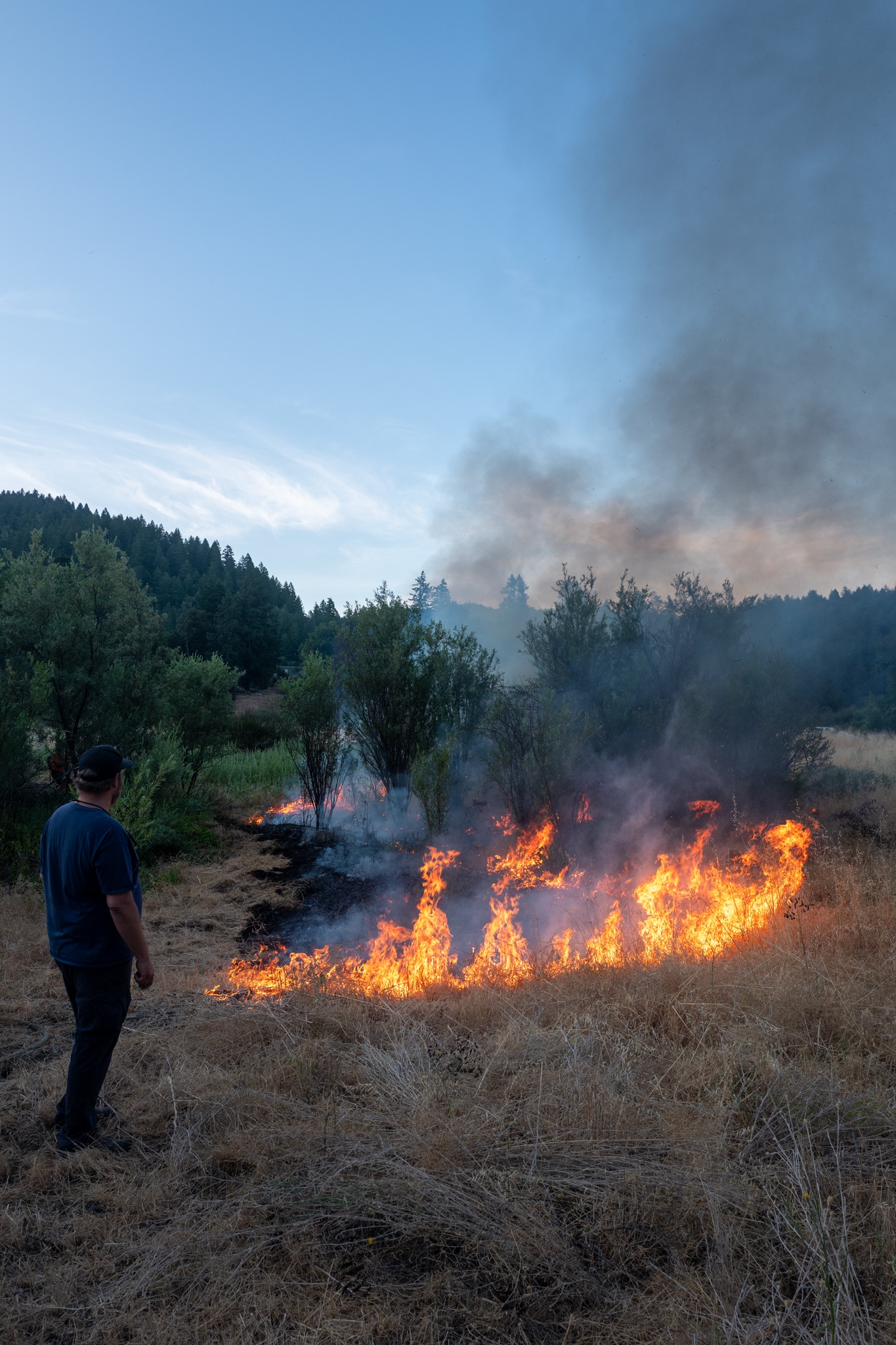
A tree ring chronology of the forest burn scars from 1600s to 2015. The text points out where in 1850, California banned cultural fire. Again in 1911, as part of the Weeks Act, the U.S. passed measures to suppress fires nationwide.
Now, after a new generation of tribal and community members organizing, educating and lobbying about the benefits of bringing fire back to the land, this time-honored practice is returning. Last fall, California enacted legislation allowing federally recognized Native American tribes to conduct cultural burning, acknowledging their sovereignty and history with the land.
The legislative victory allows tribes to set fires with less federal oversight and recognizes cultural burning as a way to make the state resilient to wildfires. Two Washington Post reporters traveled to Northern California to witness the practices firsthand.
We watched them paint with fire. Water hoses in hand, two men corralled a three-foot-high fire as it moved through an open field, hosing down grass to keep the flames under control. It’s a scene that normally spells wildfire disaster. And yet the fire moved alongside the group.
They’re cultural fire practitioners: trained and recognized by tribes to guide and manage blazes. This particular group was led by Bill Tripp, the director of natural resources and environmental policy for the Karuk Tribe. It was the end of June when we caught up with them as they burned farmland in Orleans, California, about 50 miles south of the Oregon border.
Like most burns for tribes native to this stretch of the Klamath River, their activity encourages native species growth, reduces wildfire risk and protects raw materials for craft. They conducted it on the Karuk-owned Tishaniik Farm, an agriculture project that started during the pandemic to provide food for the community.
As they moved along the field,
so went
the fire.
In its burned path
the “black line” appeared.
There’s clear skill in reading a fire: when to stop it, how to use the terrain to their advantage, when to let it go. The crew has now erected a perimeter around the field working counterclockwise. They stopped when the black line reached the top of a hill, extinguished the flames, doubled back from where they were to start new fires and then let the prevailing wind and slope work with the fresh fires.
From the back of the truck, two men hosed down either side of the fire. They guided the flames to move along and cut perimeter around the field. By encircling the grasses, they can contain the blazes.
They’re using the terrain, Tripp pointed out, so the fire will burn up toward the other end of the black line without getting out of control.
A burn is different from a prescribed fire, which the U.S. Forest Service uses to protect against major wildfires. While the agency works to reduce fodder for a possible blaze, Indigenous-led fires aim to protect their way of life.
Both can produce harmful smoke, detractors of the practices point out. Research shows prescribed fires produce around 17 percent of the fine particle pollution of a comparable wildfire, and make uncontrolled blazes less likely in the future.
While the acreage involved in burns can be much smaller, it can benefit the landscape in the same ways as a prescribed fire. Some researchers emphasize centering traditional knowledge in managing fire-prone forests and vegetation since these communities often take steps to avoid having blazes run out of control. New Mexico’s worst-ever recorded fire, the Hermit’s Peak/Calf Canyon fire in 2022, took place when the Forest Service’s prescribed burns spread during windy conditions.
Such incidents are rare, however. Fire practitioners pay attention to local conditions to determine when and for how long to burn. Tripp started the burns late in the afternoon, aiming to slow the fires with the rising humidity.
By 6 p.m., the truck returned roadside along the river with a fresh tank of water. They moved the fire downhill toward the road, completing the perimeter. The seven-foot-wide burned path is meant to keep the fire from spreading, and the nearby gravel road will not burn. Earlier Bill pointed out a patch of yellow grass running through the black line. Easy to miss, but he said they would wet it down so the fire wouldn’t escape and burn a nearby field.
Once the outer edges of the area were completed, everyone began lighting around the field from the outside in. Aaron Pole, a Hoopa tribe member and natural resource technician, passed by us just shy of a jog to pull the truck out and said: “Now the hard work’s done and you let the fire do its thing.”
The flames changed in velocity and size within 10 minutes, stretching up as high as a house. One could feel their heart pulsing under their skin. Seeing the billowing fires confuses the brain on whether one should panic or not. A rush of air picked up as the fires consumed the oxygen from inside the field. Everything sped up while little vortexes of grass and flame would spin up and peter out. Excited whoops went out from around the site.
And just like that,
by 8:30 p.m.,
the fires were gone.
Bringing fire back to the land
II.
The Cultural Fire Management Council (CFMC), which practices on the neighboring Yurok Reservation and its ancestral lands, postponed its burns that week after spotting quail eggs in a nest. The organization has been training the next generation of community members leading burns for over a decade. Margo Robbins, the council’s co-founder and executive director, said that the fires would wait until fledglings can make their way to safety.
A 2024 paper on cultural burning estimates that before Western colonization, the Karuk Aboriginal territory along the Klamath River had nearly 7,000 ignitions a year. That’s an average of 19 ignitions a day over an area 3½ times the size of New York City. Researchers estimate that at the time, every Indigenous person ignited two to a dozen fires a year.
Robbins came to cultural burning through weaving baskets, for which Yurok tribes are renowned. These technological marvels can be watertight and can be used for cooking, for carrying infants and toddlers, and in ceremonial rituals. The weaving material, though, needs fire to exist.
The California Hazelnut, a squat underbrush shrub, grows its shoots straight when burned. When Robbins started, the raw materials were hard to come by.
The CFMC launched its burns in 2012, working with their community group, California Department of Forestry and Fire Protection and the Yurok Tribal Council, burning seven acres. The next year, they burned 67 acres. Working with the Nature Conservancy, four local tribes, and state and local parks, the council now has 23 employees.
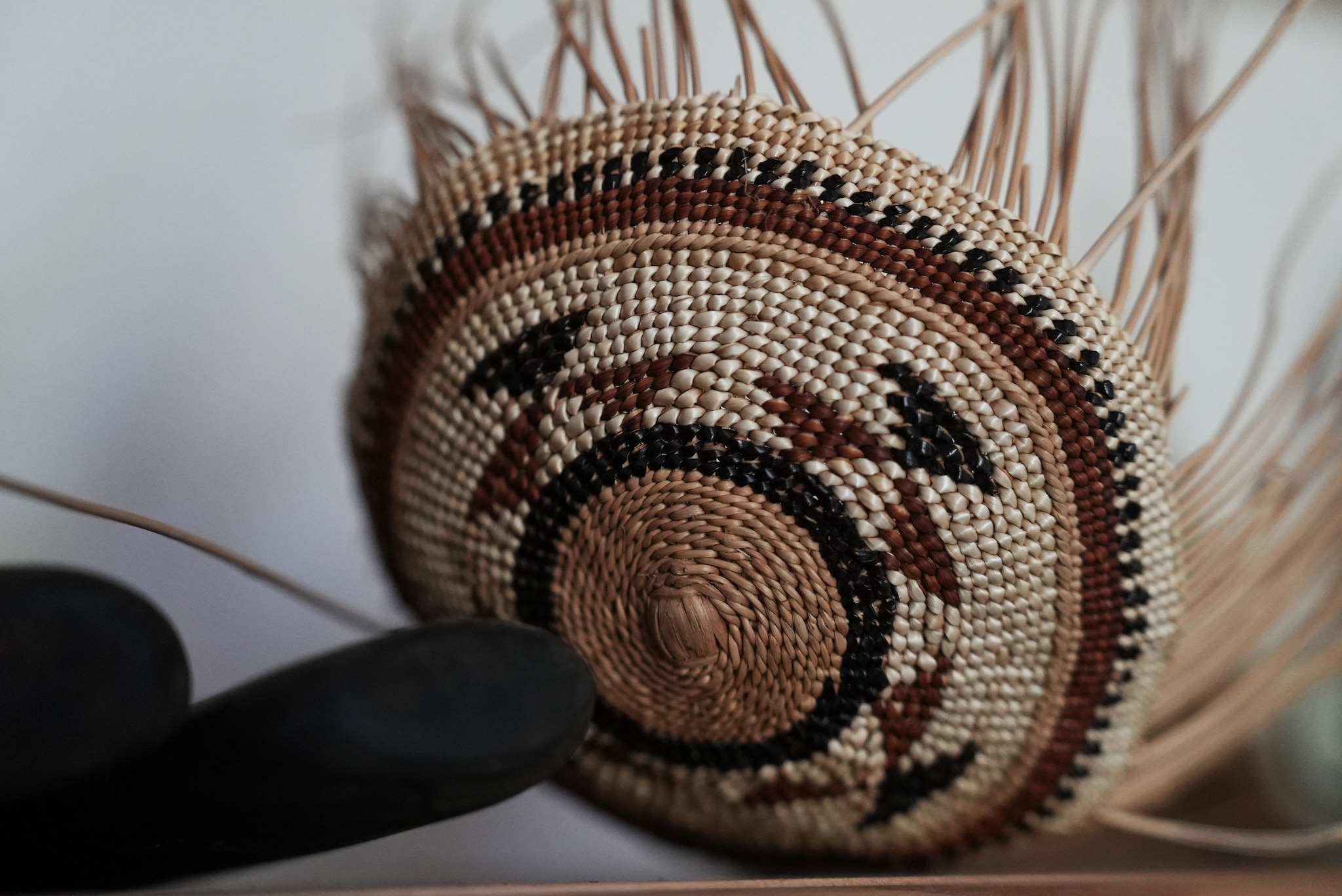
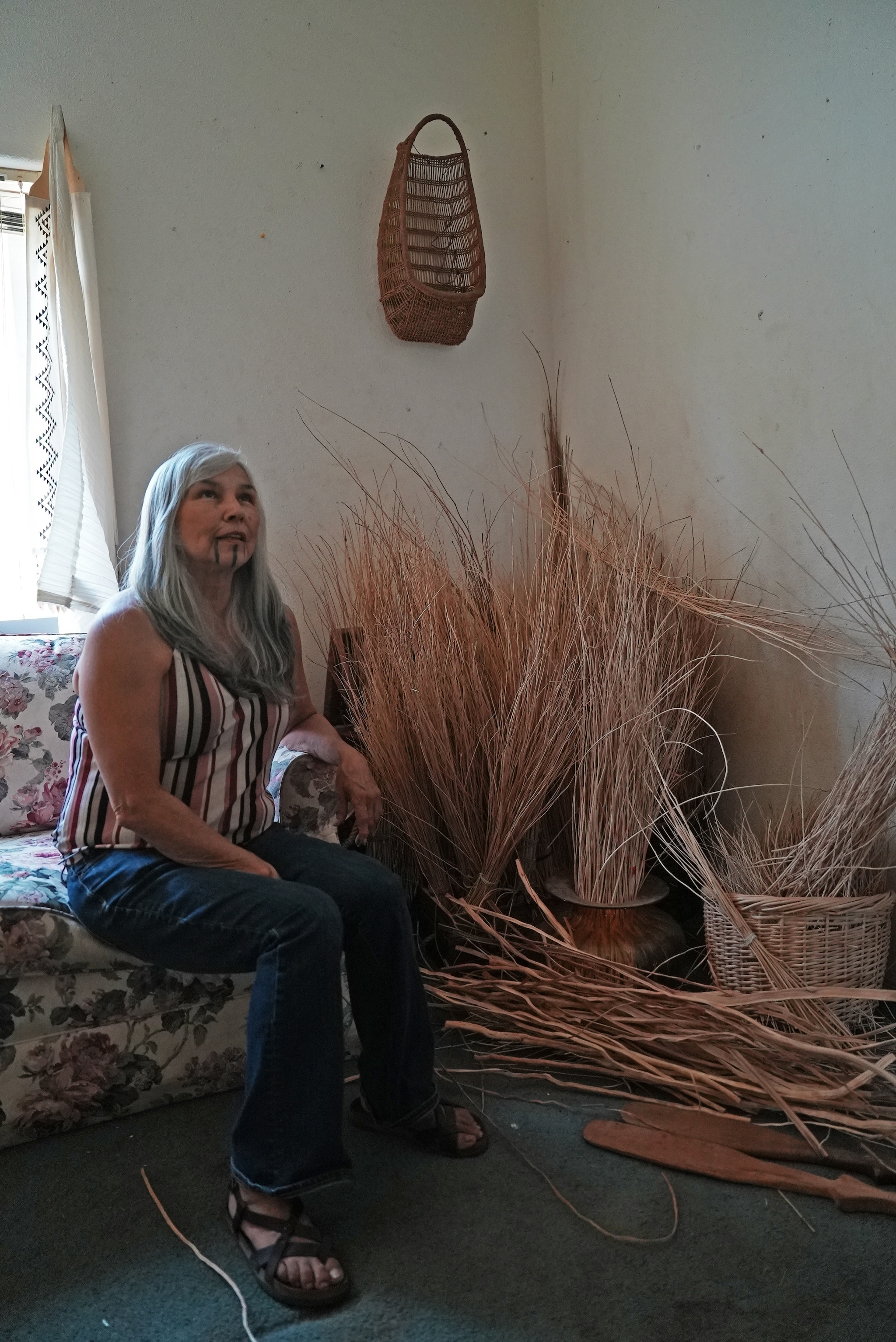
At her home, she showed us piles of hazelnut branches in her craft room lying in wait to be split and bound. Along her shelves are beaded necklaces, some for the flower dance ceremony, and smaller baskets she’s made. Robbins held up an incomplete one — a tight matrix of bright blond and dark material — that her late grandmother started but never completed. Maybe she’ll finish it one day, she said with a smile, placing it back.
Frank Lake, a research ecologist with the U.S. Forest Service and co-author of the 2024 study simulating precolonial burn rates, says it’s clear tribes native to this region intentionally modified the landscape. Lake, who has Karuk ancestry with Yurok family members, centers much of his scientific work on tribal knowledge, bearing out what is known through recorded history, oral history and available data.
Lake pointed to the impacts of excluding fire in the region, including overgrowth of trees in the Klamath Mountains, loss of biodiversity and denser tree crowns ripe for severe wildfires.
“The landscape is sick,” said Lake, a tribal resident and liaison.
Using the Karuk word “pikyav,” meaning “to fix,” he called the recent adoption of fire practice a powerful moment where national interests can be met when tribal leadership is empowered. As Lake’s grandfather put it, “fire is medicine.”
Since colonization, forests and vegetation have shifted from their historic roots. Invasive plant growth can make wildfires more severe, a risk that researchers say is compounded by drought and hotter temperatures.
This map shows vegetation departure from pre-colonization overlaid on wildfire risk as a measure of how non-native forests and vegetation might contribute to fire risk.
Lake challenged assumptions about what’s “natural” with his understanding of the landscape. If fires tended the hillside by protecting acorn-bearing tan oak trees, is that a forest, or is that an orchard? His research shows tribes have shaped crops with fire for centuries. Now living in a time where burns are legal again, he spoke about how he feels privileged to raise his son in this moment. But the Trump administration, which has pushed for the “immediate suppressing of fires,” could reverse some of the new policies aimed at reintroducing fires to the landscape.
“We hustle because we know time is limited,” Lake said.
“The more you work in the West, the more you work with fire.” That was Gavin Jones’s experience when his study on spotted owl habitats pivoted after the birds’ roosts went to ash.
Jones is a research ecologist with the Rocky Mountain Research Station. Studying the threatened species, he found that wildfires play a role in where the birds choose to live. The owls prefer a Goldilocks-home: not pristine, not too fire scarred, something burned just so.
Historically, Jones said, fire was an enormous part of the landscape in much of the western United States. But fire suppression policies led to dramatic changes by the late 1800s. In colder and wetter forests like those in the Pacific Northwest, a fire’s ability to spread is now dictated by warmer temperatures, while blazes in forests like those along the Sierra Nevada range became fuel-limited, meaning they depend on available fuel sources like dry grasses, combustibles or water-stressed trees.
Centuries of excluding fire from these forests meant higher tree density and less biodiversity. Jones says that on the evolutionary scale, fire adaptation can happen pretty rapidly, especially after a sudden shift. “It is a strong selection force.”
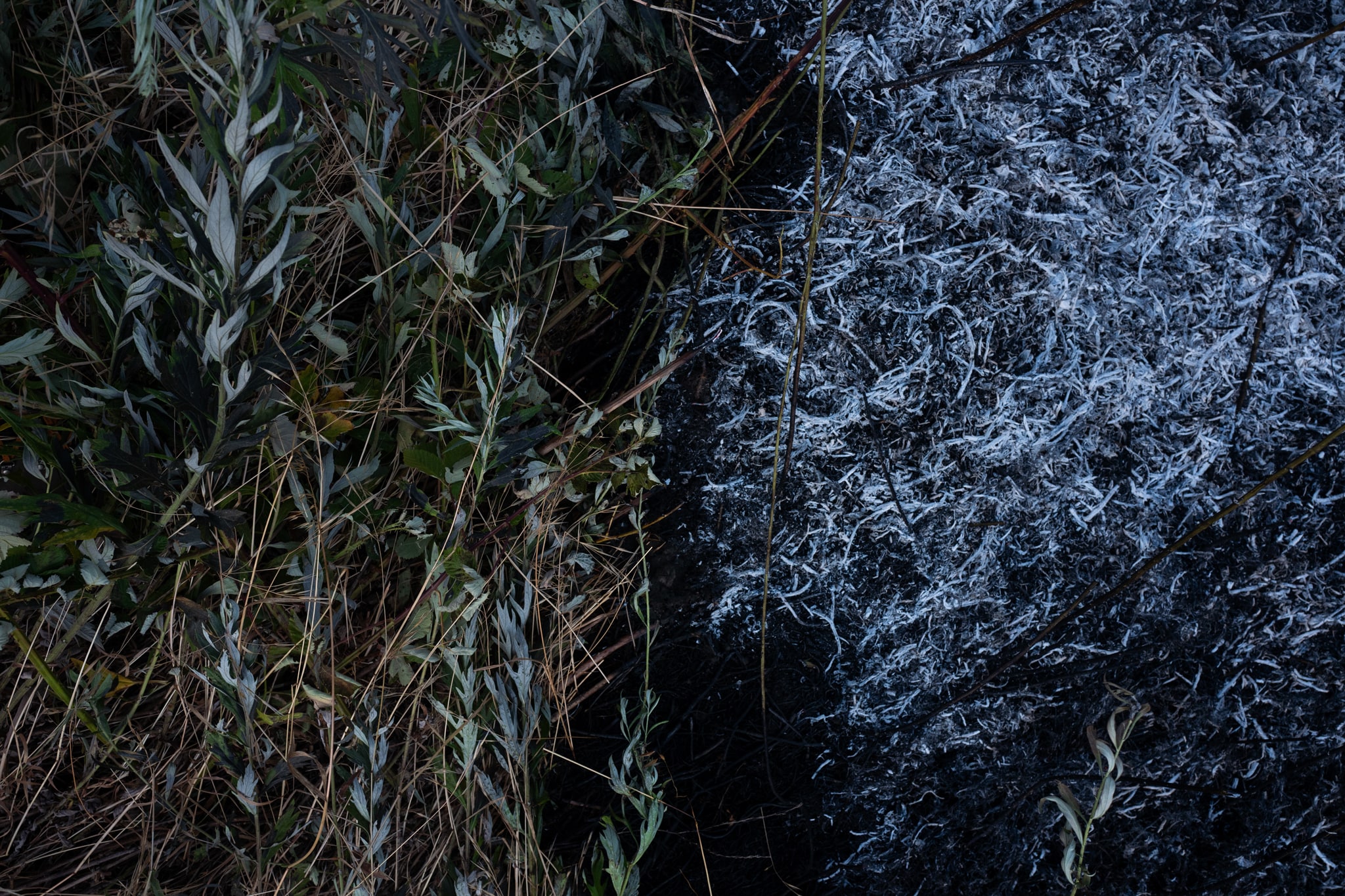
Burns encourage more variation in the forest landscape, which leads to greater biodiversity — but there are hard limits. Even in species like the black-backed woodpecker, which needs a burned area for its habitat, few were found after the 2013 Rim and 2014 King wildfires.
Researchers like Tom Swetnam, a professor emeritus of dendrochronology and fire history at the University of Arizona, warn that cultural fire can’t be applied to all forests, since in some places this traditional knowledge has been lost.
“It’s not an obvious solution for everywhere,” Swetnam said.
Robbins with the CFMC took us to the Weitchpec transfer station, a 20-minute drive from the Tishaniik Farm, where some of the oldest continually treated forest projects are. We saw how different the understory could feel. Sunlight blankets what is otherwise a claustrophobic and shady part of the woods.
Robert McConnell — the council’s burn boss, or fire manager — reached out to grab a hazelnut branch basking in the sun as he told us about the group’s first burn here in 2012. As he petted the low brush with care, I noticed the stark contrast with a darker patch of forest over his shoulders: That land is off limits to burning. Dense with fir trees, you could scarcely see through it, while we stood in an open area marked by thickets of low grasses, shrubs and oak trees.
Robert peered into the hollow burn scar in a conifer, its dark corners now an animal’s storehouse for hazelnuts. Nearby, native potatoes and berries grew unabated. McConnell examined where someone had been harvesting branches for basket materials, concluding that it must have been recent. These resources are all made possible from burning here, he said, pausing to listen for the call of a variegated woodpecker.
A recent study by Gavin Jones found that continuing under the status quo of fire exclusion in the Sierra Nevada range would mean a 64 percent chance of complete forest loss in the next 50 years. That risk increased to a near total loss by the end of the century. Forest restoration through mechanical thinning and beneficial fire, like cultural burns, reduce these chances to single digits.
When massive fires break out, both prescribed and managed burned forests do better. A study by Jones and others from earlier this year found that treated areas in southwestern New Mexico burned less severely by 21 to 55 percent. Good fire-centered forest management is filtering into how the country reduces wildfire risk.
All Hands All Lands, a cooperation of tribal and civic organizations leading burns in the region, cleared out brush and set fires along the sloping hillside by the Klamath River. Staring at the blazes along Sandy Bar Ranch, her home and business, Blythe Reis said she feels protected when the temperature reaches 100 degrees and when lightning strikes come. “We’ve been doing controlled burns on our property for eight to 10 years now. It just makes you feel safer.”
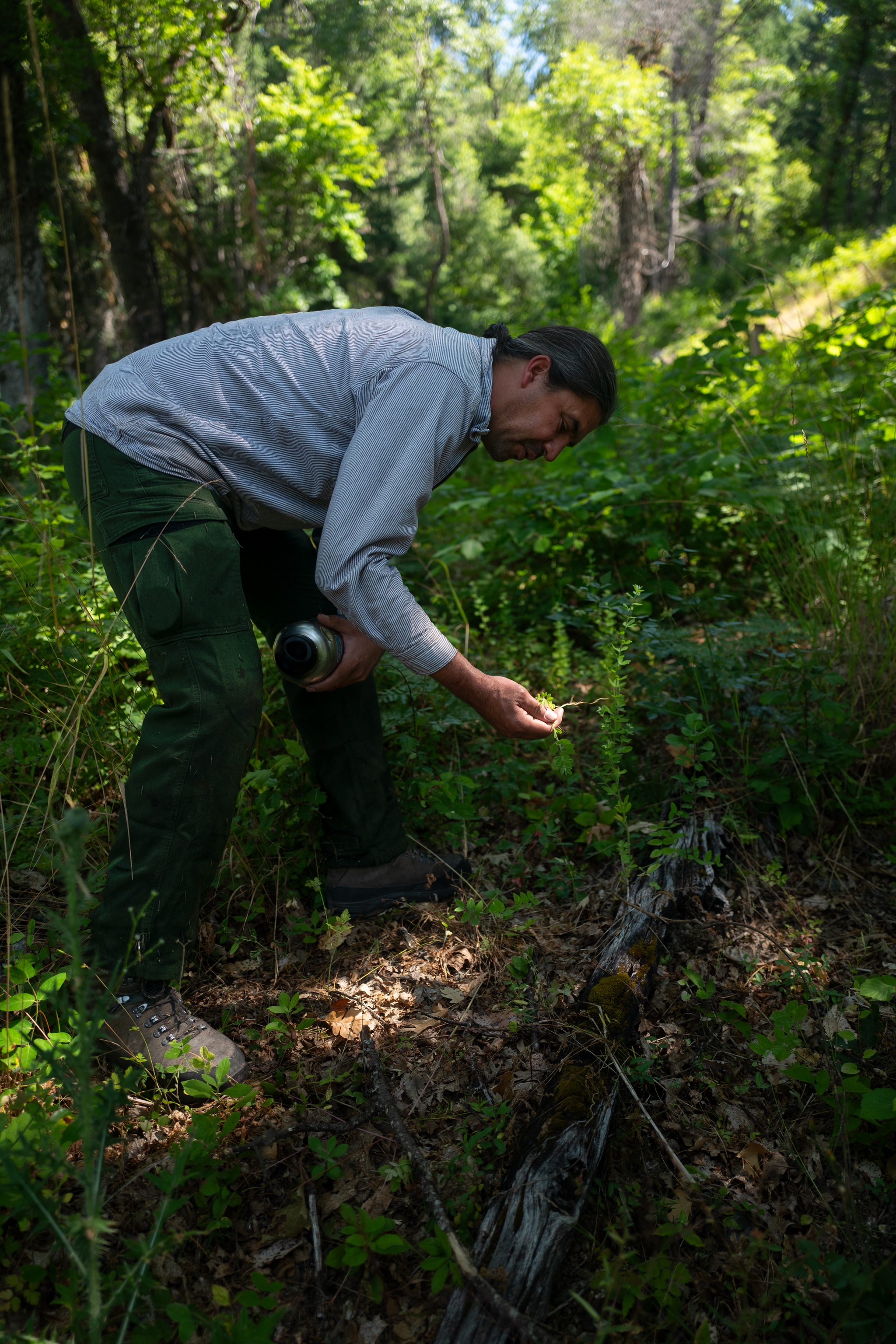
On our last day with Tripp, he took us through back roads to a site where they first started prescribed burns. Along the way we stopped for a sip of fresh spring water flowing from a rocky hillside, noting that burns improve the health of nearby springs.
Tripp started burning at the age of four, after his grandmother caught him making fires and told him that he might as well be useful. He figured out how to move the fire, contain it, and kindle new areas in his backyard. For the next few years his grandmother would tell him stories of cultural fire every night, and one night when he was eight, she asked him, “Now that you have this knowledge, what are you going to do with it?
The next day, a few miles from the Oregon border, I found myself talking with a postal worker in the town of Happy Camp who suggested I drive some 40 minutes up the road to see the burn scar. Though it has been five years since the devastating Slater fire, the landscape feels as though fires tore through recently. There’s barely a sound, and wind sweeps freely through the matchstick remains of conifers.
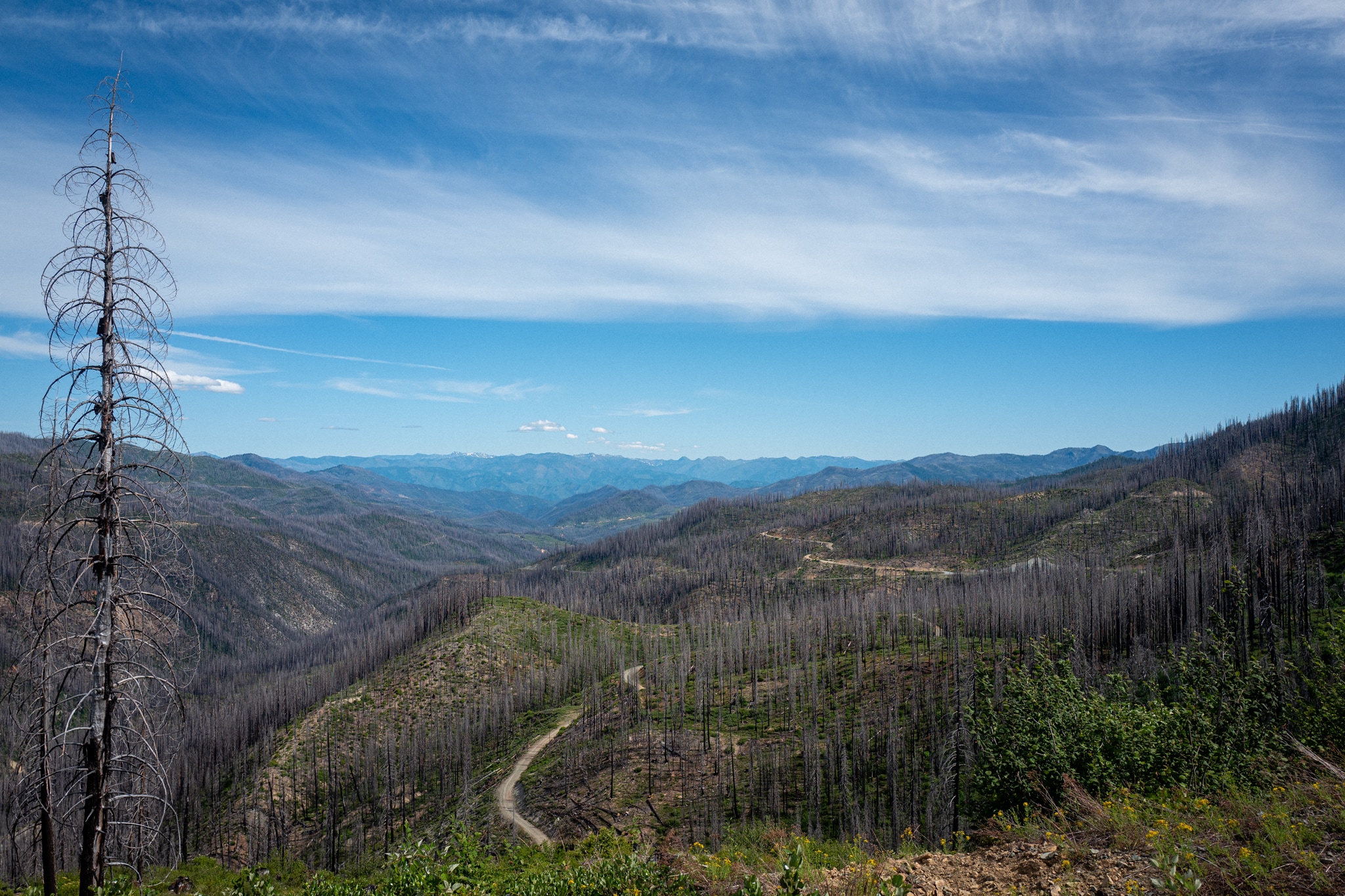
About this story
Reporting for this story was made possible in part by a grant from the Institute for Journalism & Natural Resources.
Design and development by Emily Wright. Photos by Daniel Wolfe and Alice Li. Motion graphics by CJ Riculan. Editing by Simon Ducroquet, Juliet Eilperin and Dominique Hildebrand.

